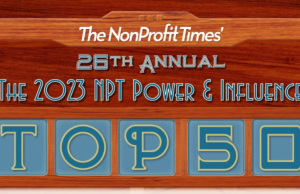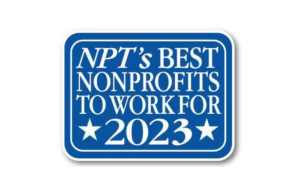The philanthropic impulse is stronger than the pressures of economic downturns. While giving does tend to tick down during recessions, funding rebounds in the years after the end of a recession, both in terms of current and inflation-adjusted dollars.
Furthermore, charitable giving has either been stagnant or increased every year from 1979 through 2020, with the exception of three years during which the United States experienced the most significant economic declines: 1987, 2008 and 2009, according to Philanthropy Through Recession: How Savvy Organizations Weather Uncertain Times, a new report from Charleston, S.C.-based Blackbaud Institute that looks at philanthropic activity during the past 40 or so years.
The report’s authors used various data sets including Giving USA 2022 from the The Giving Institute.
Ongoing giving strength partly reflects the ability of high-net-worth individuals to weather downturns. While these funders are affected by recessions, their philanthropy tends to lag fluctuations in the S&P 500. (The report characterizes that stock index as “the strongest indicator of wealth and, therefore, a direct correlation to high-net-worth giving.”) Report authors also note that changes in tax codes have a significant impact on giving.
According to the authors and the various data sets, between 1981 and early 2020 individual giving as a percentage of disposable personal income (in current dollars) vacillated between 1.8% and 2.2%. Actual dollar donations have increased during this time, due to inflation and other considerations. As of early 2020, the percentage stood at 1.8%, but the data cuts off just before the start of the coronavirus pandemic and the resulting donations boosts.
The number of potential recipients has increased as well. In 2013, the number of registered 501(c)(3) organizations dipped to a decade-long low of just over 1.05 million from 1.28 million in 2010. By 2020, in part spurred by a rising diversity of social concerns, there were more than 1.4 million such organizations.
Because of this delay, along with the increased focus on the needs of nonprofits during the coronavirus pandemic, as well as attention to other social concerns, “it remains too early for recent market volatilities to be felt related to giving” according to the report authors.
Philanthropists take actions that hedge against economic uncertainty, according to report authors. Donor-advised fund (DAF) activity tends to increase, as philanthropists seek a mechanism to build and maintain assets that allow for charitable giving during economic shocks.
Nonprofit managers should not be waiting for charitable largesse during downturns. The report includes several steps leaders at tax-exempt organizations can take to weather the shocks of economic uncertainty, including:
- Boosting digital capabilities, whether strengthening employees’ ability to work from remote locations, upgrading back-office technology or creating or upgrading stakeholder-facing digital experiences.
- Investing in donor research, especially as the increasing pool of donations appears to be coming from a shrinking pool of donors. In some cases, this might entail reviewing existing donor files with an eye toward determining whether more can be asked of them. Organizations should also investigate whether they are able to accept all forms of non-cash gifts donors may wish to offer.
- Boosting retention activities. Prospecting is an activity better accomplished during flush times, while during times of economic uncertainty organizations should put more (but not exclusive) focus on retaining existing donors.
- Investing in and promoting or expanding a sustained giving program.
- Enabling and supporting peer-to-peer fundraising. Not only are these activities stronger in terms of generating interest and new donors they are increasingly the activities of choice among younger generations of supporters.
- Diversifying revenue mixes, as appropriate to the nature and mission of the organization. Overreliance on any one source is risky: where appropriate, nonprofits should investigate generating revenue through program fees, foundation requests, government funding or other traditionally – for the organization – non- or under-utilized sources.
Additional details regarding the report’s findings are available here: https://institute.blackbaud.com/philanthropy-through-recession/












